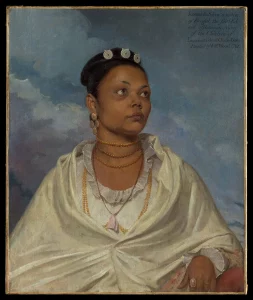In March 2023, the Metropolitan Museum of Art in New York closed all the forty-five galleries dedicated to European painting. This was the culmination of a five-year, $150 million project to fix the roof, skylights, and HVAC systems for that part of the museum. The renovations have made the oldest part of the building far more energy-efficient. And now, on Monday, November 20th, the galleries finally opened again, accompanied by an incredibly bold and modern rehang.
On previous visits to the Met, you might have noticed a general pattern: curators grouped the department’s paintings department by geography and nationality. However, when the Met unveiled its new rehang after the skylights’ installation, visitors saw that the placement of each painting carried far greater nuance than shared nationality could ever convey. The new rehang, called Look Again, is less grouped by nationality and more by chronology, among other factors. However, the Met curators are now trying to contextualize the paintings in terms of their relationship to each other and the world in which they were created. Rather than treat Europe as a series of small national boxes grouped together for centuries the same way we understand them now, the paintings’ placement and the information displayed alongside them show that for centuries, European peoples have not only been in contact with each other but with the wider world, including Africa, Asia, and the Americas. The curators also tried to show the importance and impact of both women and people of color on European painting, as well as their representation in such paintings. Works such as William Wood’s Portrait of Joanna de Silva and Velázquez’s Portrait of Juan de Pareja show Western Europe’s connection to and perception of other parts of the world at a time when their colonial projects were already underway. For example, the new rehang highlights the work of the seventeenth-century Flemish painter Clara Peeters, showing how female painters significantly influenced the art of European still-life painting and scientific illustration during the scientific and industrial revolutions. The paintings of Elisabeth Louise Vigée Le Brun and Margareta Haverman also feature prominently in the rehang.
The new rehang also highlights something that Met curators seem experienced in doing. Like their new exhibition exploring the relationship and the dialogue between Édouard Manet and Edgar Degas, the European painting curators look at Old Master European paintings and how they later influenced modern art. In one of the galleries, works by El Greco hang alongside Cézanne and early Picasso paintings to show how direct an influence the Spanish Renaissance master had over later artists. Similarly, a self-portrait by Marie Victoire Lemoine, who lived and worked mainly in Revolutionary and Napoleonic France, is presented side-by-side with a 1946 self-portrait by Elaine de Kooning.
When the European galleries closed, the Met technical staff and conservators took advantage of that time to clean and restore some of the department highlights that had been neglected over the previous decades. One of my favorites in the Met’s European paintings collection is Rembrandt’s 1653 Portrait of Aristotle with a Bust of Homer. The modern, synthetic varnish applied to the painting during its last restoration around forty years ago had become rather opaque, leading to its most recent touchup.
Though the Met’s new rehang keeps pace with new trends in contemporary museum curation, it’s not unusual to remark that a fresh take on viewing the collection is long overdue. Museum director Max Hollein described the gallery closures brought about by the renovations as a “once-in-a-lifetime opportunity to completely rethink the presentation of this much-beloved collection”. It’s funny how one of the largest, most famous art collections in the world, filled with works that are instantly recognizable to both specialists and the general public, can be used to do something like this; to make new connections and tell untold stories that may surprise visitors and make many people feel seen for the first time in a setting like a major museum.

